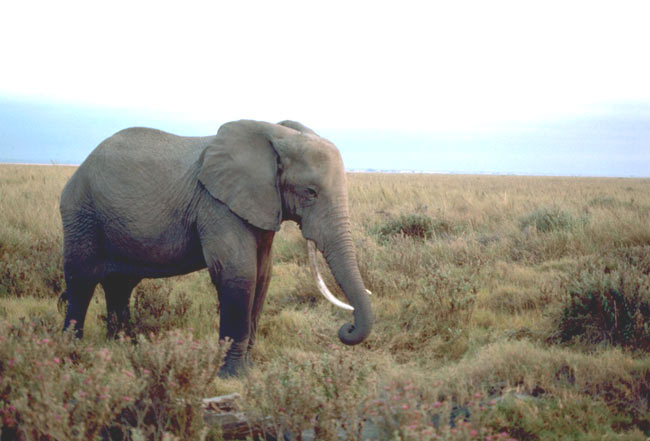Prehistoric Humans Wiped Out Elephants

One million years ago, elephants and their cousins roamed the five major continents of the earth. Then humans came along. Today elephants can be found only in portions of sub-Saharan Africa and South Asia.
There is a long-running debate over what drove elephants to extinction in some parts of the world and completely wiped other two other proboscideans, mammoths and mastodons.
The two most argued hypotheses for their decline are climatic changes and over-hunting by humans. A recent archaeological expedition dug up information that may support the latter.
Exploring 41 sites ranging from 1.8 million to 10,000 years old, Todd Surovell of the University of Wyoming found that interactions between humans and elephants matched up with successive waves of human population expansion. As the human populations in those sites continued to grow, the number of elephants shrank and, in some sites, disappeared.
The findings suggest that the geographic expansion of prehistoric humans resulted in localized extinction events. Over-hunting was a key factor in these extinctions, Surovell figures, but range fragmentation likely played a role too.
"If, for example, human hunting fragmented what were once large continuous populations of elephants into small isolated populations, extinction can come about due to various demographic problems that plague small populations," Surovell told LiveScience.
Climate changes probably had an effect. Between 40,000 and 10,000 years ago, the Arctic ecosystems switched from being cool, dry grasslands - which mammoths liked - to being cool, wet tundra.
Get the world’s most fascinating discoveries delivered straight to your inbox.
Additionally, the extinction of western North American mammoths appears to have coincided with an extensive drought. Today in Africa, elephants commonly die in large numbers during droughts.
In the Americas both mammoths and mastodons died out. Europe and Asia once had species similar to modern Asian elephants as well as wooly mammoths. European and northern Asian proboscidean populations lasted until fairly recently because humans did not venture into the high latitudes where mammoths made their homes. Similarly, elephants survive in sub-Saharan Africa today partly because humans have never settled in large numbers there.
The study was published last week in the Proceedings of the National Academy of Sciences.
Related Stories
- Scientists Aim to Revive the Woolly Mammoth
- Surviving Extinction: Where Woolly Mammoths Endured
- The Ticklish Trick of Inseminating an Elephant
- DNA Tests of Illegally Traded Ivory Could Save Elephants
- Construction Crew Finds Mammoth Bone
Uplink Your Views
